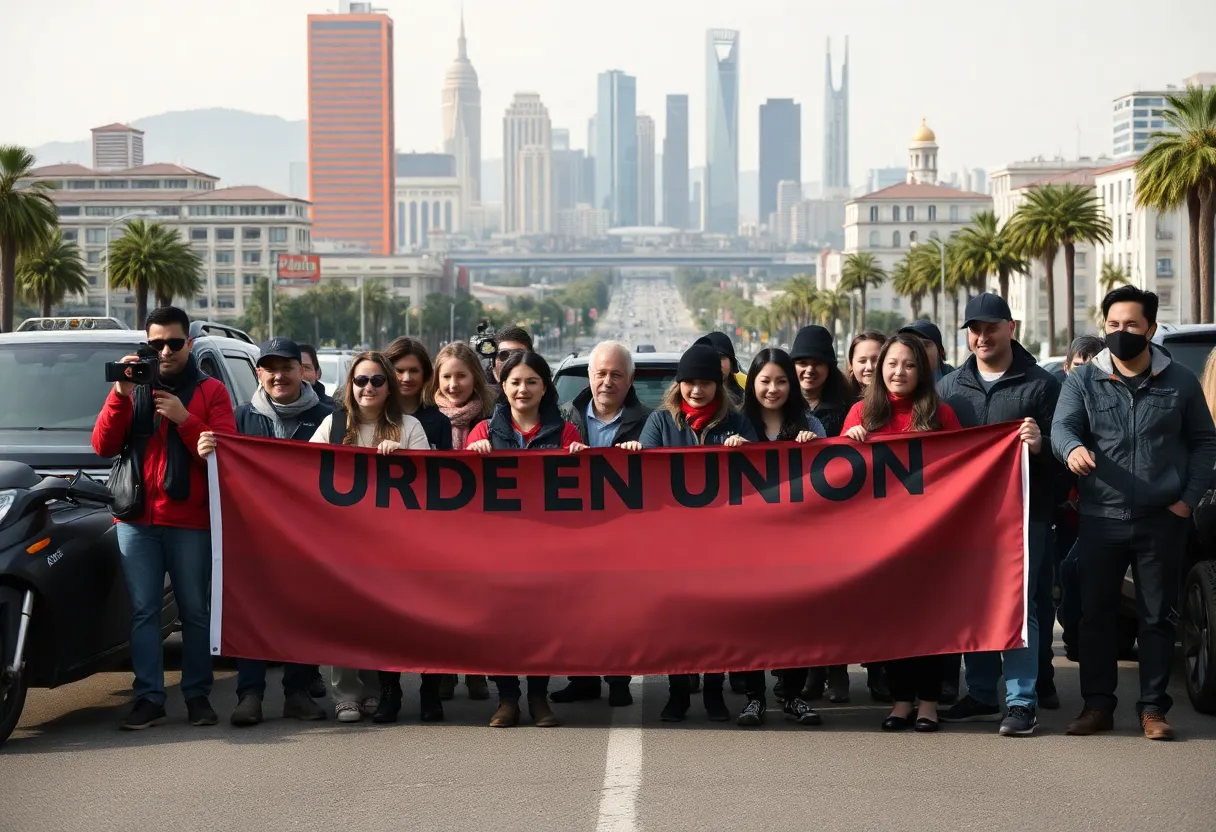California, October 5, 2025
News Summary
California Governor Gavin Newsom has signed Assembly Bill 1340 into law, allowing rideshare drivers to unionize as independent contractors. This move benefits over 800,000 drivers, giving them rights to negotiate contracts while requiring companies like Uber and Lyft to engage in good faith negotiations. The legislation, however, raises concerns about reduced insurance coverage for accidents and the exclusion of other gig workers like food delivery drivers. Critics worry the bill may not adequately protect drivers during bargaining. This significant development marks a notable shift in labor rights for California’s gig economy.
California Passes Landmark Bill Allowing Rideshare Drivers to Unionize as Independent Contractors
California Governor Gavin Newsom has officially signed Assembly Bill 1340 into law, marking a significant shift in labor rights for the state’s rideshare drivers. This new legislation allows rideshare drivers to form unions and negotiate contracts while retaining their status as independent contractors. With this law, over 800,000 rideshare drivers in California will benefit from the newfound unionization rights, positioning it as one of the largest expansions of private sector collective bargaining rights in the state’s history.
The law mandates that app-based transportation companies, including major players like Lyft and Uber, engage in good faith negotiations with the unions formed by drivers. In a testament to the ongoing power dynamics in California’s labor market, this legislation is the product of a compromise among various stakeholders, including labor unions, specifically the Service Employees International Union (SEIU), and gig economy companies. This comes after years of political and legal disputes surrounding the classification of drivers as independent contractors.
It’s important to note that this law does not extend its protections to other gig workers, such as food delivery drivers working for apps like DoorDash. The legislation lays out a clear structure for drivers interested in unionizing. A union can be formed if at least 10% of active drivers sign a petition for representation. Following that, once 30% of active drivers support the initiative, they can seek union certification, at which point an election will be held to determine representation, particularly if more than one organization wishes to represent drivers.
The definition of “active” drivers under this new law includes those who completed a median number of rides within the previous six months, ensuring that only engaged drivers are included in the unionization process. However, many are concerned with a provision in the bill that reduces the insurance requirements for rideshare companies, decreasing coverage for accidents involving underinsured drivers from $1 million to $60,000 per individual and $300,000 per accident. This decrease in mandatory coverage raises questions about the level of protection for drivers in case of incidents on the job.
While some drivers are optimistic, believing that the law will provide crucial collective bargaining rights for better pay and protections, others have highlighted potential flaws in Assembly Bill 1340. Critics have pointed out issues like algorithmic pay changes that might affect driver earnings during union negotiations. Notably, ride-hailing companies like Lyft expressed approval for the law, framing it as a victory for both the drivers and passengers in California.
Despite some advocacy from drivers and labor groups, there remains skepticism regarding the effectiveness of the new law. Concerns have been raised that it may culminate in a “union-in-name-only” situation, where meaningful negotiations and protections for drivers are limited. Advocacy group Rideshare Drivers United has voiced worries that the collective bargaining law is insufficient to secure fair contracts for the drivers involved.
Furthermore, critics argue the law does not offer necessary worker protections during collective actions such as strikes, nor does it mandate that companies disclose wage data. As California embarks on this new chapter for gig workers, the legislation highlights the broader conversation surrounding worker rights in the evolving gig economy, emphasizing a tangible need for improved safety and compensation for rideshare drivers.
While some lawmakers perceive this compromise as a step forward for the empowerment of drivers, they acknowledge that it does not fully meet all initial goals concerning the employment status of drivers. The unique challenges faced by drivers in organizing—primarily linked to their non-traditional work settings, which lack specific meeting spaces—further complicate the landscape.
FAQ
What does Assembly Bill 1340 allow rideshare drivers to do?
Assembly Bill 1340 allows rideshare drivers to form unions and negotiate contracts while retaining their status as independent contractors.
How many rideshare drivers will benefit from this new law?
Over 800,000 rideshare drivers in California will benefit from the new unionization rights.
Do other gig workers benefit from this law?
This law does not extend to other gig workers, such as food delivery drivers working for apps like DoorDash.
What is required for rideshare drivers to form a union?
Drivers need signatures from at least 10% of active drivers to petition for union representation.
What happens once 30% of active drivers sign up for a union?
Once 30% of active drivers are signed up, they can petition for union certification, leading to an election if multiple organizations seek to represent them.
What has changed regarding insurance requirements for rideshare companies under this law?
The law reduces insurance requirements for rideshare companies, decreasing coverage for accidents involving underinsured drivers from $1 million to $60,000 per individual and $300,000 per accident.
What concerns do drivers and advocates have about this law?
Critics, including advocacy groups, argue that the collective bargaining law might not be strong enough to ensure fair contracts for drivers and lacks necessary protections during collective actions.
Key Features of AB1340
| Feature | Description |
|---|---|
| Union Formation Rights | Allows rideshare drivers to form unions while remaining independent contractors. |
| Negotiation Requirement | Mandates companies like Lyft and Uber to negotiate in good faith with unions. |
| Insurance Coverage | Reduces insurance for underinsured driver accidents to $60,000/person and $300,000/accident. |
| Driver Inclusion | Only includes active drivers who completed a median number of rides in the past six months. |
| Exclusion of Other Gig Workers | Does not apply to gig workers in other sectors, like food delivery. |
| Petition Process | Requires 10% signatures to form a union, 30% for an election. |
Deeper Dive: News & Info About This Topic
- CBS News
- Los Angeles Times
- AP News
- Lookaside Facebook
- Politico
- Wikipedia: Ridesharing
- Google Search: California rideshare unionization
- Google Scholar: rideshare unionization California
- Encyclopedia Britannica: Ridesharing
- Google News: California rideshare drivers union

Author: STAFF HERE LOS ANGELES WRITER
The LOS ANGELES STAFF WRITER represents the experienced team at HERELosAngeles.com, your go-to source for actionable local news and information in Los Angeles, Los Angeles County, and beyond, specializing in "news you can use" with coverage of product reviews for personal and business needs, local business directories, politics, real estate trends, neighborhood insights, and state news affecting the area—with deep expertise from years of dedicated reporting and strong community input, including local press releases and business updates, while delivering top reporting on high-value events like the Academy Awards, LA Auto Show, and Los Angeles Marathon, extending coverage to key organizations such as the Los Angeles Area Chamber of Commerce and the Los Angeles Tourism & Convention Board, plus leading businesses in entertainment and technology like Warner Bros. and SpaceX, and as part of the broader HERE network including HEREAnaheim.com , HERECostaMesa.com , HEREHuntingtonBeach.com , and HERESantaAna.com , providing comprehensive, credible insights into Southern California's dynamic landscape. HERE Anaheim HERE Beverly Hills HERE Coronado HERE Costa Mesa HERE Hollywood HERE Huntington Beach HERE Long Beach HERE Los Angeles HERE Mission Viejo HERE San Diego HERE Santa Ana





